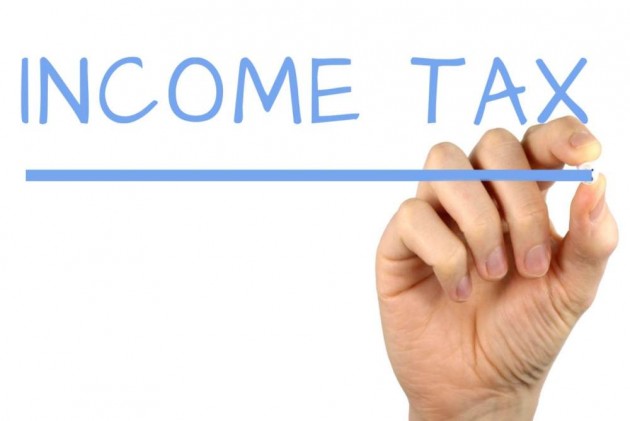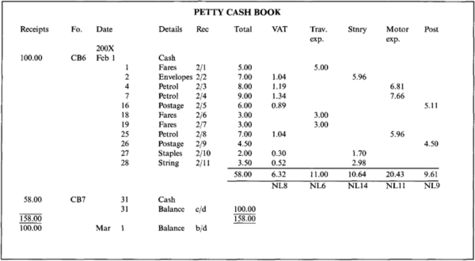
Company accountants then create an entry debiting bad debts expense and crediting accounts receivable. It is important to consider other issues in the treatment of bad debts. For example, when companies account for bad debt expenses in their financial statements, they will use an accrual-based method; however, they are required to use the direct write-off method on their income tax returns.
Using this method allows the bad debts expense to be recorded closer to the actual transaction time and results in the company’s balance sheet reporting a realistic net amount of accounts receivable. The balance sheet method (also known as the percentage of accounts receivable method) estimates bad debt expenses based on the balance in accounts receivable. The method looks at the balance of accounts receivable at the end of the period and assumes that a certain amount will not be collected.
The allowance for doubtful accounts is a contra asset account and is subtracted from Accounts Receivable to determine the Net Realizable Value of the Accounts Receivable account on the balance sheet. In the case of the allowance for doubtful accounts, it is a contra account that is used to reduce the Controlling account, Accounts Receivable. Bad debts recovered entry is to record the income receivable from already recorded bad debt. So, we will debit the bank account (asset account) and Credit to the bad debts recovery account (income account) in the journal entry. However, there is another accounting treatment to record the bad debt recovery. We can reverse the debtor and bad debts through a Journal entry to the extent of the collectible amount, and it increases debtor balance and reduces bad debt expense.
Step 1. Reverse Original Recordation
Using the percentage of sales method, they estimated that 1% of their credit sales would be uncollectible. In some cases, the IRS allows tax filers to write off non-business bad debts. These debts must be completely entry of bad debts recovered not collectible, and the taxpayer must be able to prove they did as much as possible to recover the debt. We will treat bad debts recovered as income in the Profit and Loss account considering its nature.
- The books of accounts do not comprise of any journal entries relating to Successful company transactions.
- In this example, assume that any credit card sales that are uncollectible are the responsibility of the credit card company.
- Bad debt expense also helps companies identify which customers default on payments more often than others.
- Since the write-off decision is based on judgment, it may eventually be collected.
- After this entry, the bad debts recovery account will show a credit balance at the end of the financial year and will be transferred to the credit side of the profit and loss account as an item of income.
We also record a debit to the bad debts account because we had previously written off this amount as a bad debt. Bad Debts are loss to the business and falls under Nominal accounts. The accounting rule applicable for Nominal accounts is debiting all the expenses or losses and Crediting all the incomes or gains. You can specify the Tax Period in the Process Bad Debt Recovery (tfacr2216m000) session .
Would you prefer to work with a financial professional remotely or in-person?
Bad debt recovery means you need to create new journal entries in your books. The bad debt relief process creates a summary of all
transactions in the Bad Debt Relief / Recoveries by Invoice (tfacr2515m000) session. The details related to bad debt relief transaction lines, the original
tax transactions and the invoice lines are recorded in the Bad Debt Tax
Transaction Line. The best trade credit insurance also provides credit data and intelligence designed to help companies improve their credit-related decision making and credit management.

For the sake of this example, assume that there was no interest charged to the buyer because of the short-term nature or life of the loan. When the account defaults for nonpayment on December 1, the company would record the following journal entry to recognize bad debt. Bad debt is all but inevitable, as companies will always have customers who won’t fulfill their financial obligations. That’s why there is a high demand for bad debt recovery companies or (third-party) collection agencies.
The receipt of such an amount is called the recovery of bad debts. The books of accounts do not comprise of any journal entries relating to Successful company transactions. Report your bad debt recovery if your original bad debt claim lowered your tax liability. Include the bad debt recovery funds in your business’s annual gross income.
Is bad debts recovered debit or Credit?
In this case, the company’s bad debt expense represents 5% of its accounts receivable. The following table reflects how the relationship would be reflected in the current (short-term) section of the company’s Balance Sheet. The allowance method is the more widely used method because it satisfies the matching principle. The allowance method estimates bad debt during a period, based on certain computational approaches. The calculation matches bad debt with related sales during the period.
Has your debt with Hoist been sold to Lowell? – Debt Camel
Has your debt with Hoist been sold to Lowell?.
Posted: Tue, 02 May 2023 07:00:00 GMT [source]
However, if there is any recovery from such loss due to any reason, then it’s an income. Therefore, we need to record such cash inflow as income to the entity. How you create a bad debt recovery journal entry depends on your original bad debt journal entry. You can either use the allowance method or direct write-off method. After the bad debt is relieved and the payment is
received/made, use the Process Bad Debt Recovery (tfacr2216m000)/ Process Bad Debt Recovery (tfacp2216m000) sessions to recover bad debt relief. Prerequisite is that the transactions of all involved receipts or assignments
of receipts to invoices must be finalized.
When the debt is written off, it must be accounted for as a loss. A bad debt recovery can also come from the sale of a borrower’s collateral. For example, a lender might repossess a car after a borrower on a car loan has been delinquent in making payments. The lender sells the car, and the proceeds from the sale are considered a bad debt recovery. Recovering bad debt helps companies understand how much they may have lost during a specific time period due to uncollected Accounts Receivable.
How Does a Bad-Debt Write-off Show on the Books?
A company may know that it will never get paid, or no longer wants to pursue payment of an account. When a consumer’s unpaid debt is turned over to a collection agency, that information becomes part of their credit report and can remain there for seven years, impairing their ability to obtain credit in the future. John has learned that David, who owed him $960, has passed away and left no estate behind.
For example, if someone lent a friend or neighbor money in a transaction completely unrelated to either of their businesses, and the borrower failed to repay the loan, that is a non-business bad debt. The business only has to report the amount of the recovery equal to the amount it previously deducted. If a portion of the deduction did not trigger a reduction in the company’s tax bill, it does not have to report that part of the recovered funds as income. When a full or partial repayment of a debt is received after it has been written off, that’s referred to as a bad debt recovery. A bad debt might be recovered through a payment from a bankruptcy trustee or because the debtor has decided to settle the debt at a lower amount.
To record the bad debt recovery transaction, debit your Accounts Receivable account and credit your Bad Debts Expense account. Typically, the allowance method of reporting bad debts expenses is preferred. However, it’s important to know the differences between these two methods and why the allowance method is generally looked to as a means to more accurately balance reports. A bad debt expense is typically considered an operating cost, usually falling under your organization’s selling, general and administrative costs. This expense reduces a company’s net income over the same period the sale resulting in bad debt was reported on its income statement.
- A bad debt may also be recovered if an asset used as collateral is sold.
- Note that allowance for doubtful accounts reduces the overall accounts receivable account, not a specific accounts receivable assigned to a customer.
- It may be obvious intuitively, but, by definition, a cash sale cannot become a bad debt, assuming that the cash payment did not entail counterfeit currency.
- Include the bad debt recovery funds in your business’s annual gross income.
Sometimes, at the end of the fiscal period, when a company goes to prepare its financial statements, it needs to determine what portion of its receivables is collectible. The portion that a company believes is uncollectible is what is called “bad debt expense.” The two methods of recording bad debt are 1) direct write-off method and 2) allowance method. While a company is unlikely to avoid bad debt expense entirely, it can protect itself from bad debt in a number of ways such as allowance for bad debts. Another way is for companies to set various limits when extending customer credit to minimize bad debt expense. Such limits can be set to manage existing and potential bad debt expense overall and for specific customers.
This application probably violates the matching principle, but if the IRS did not have this policy, there would typically be a significant amount of manipulation on company tax returns. For example, if the company wanted the deduction for the write-off in 2018, it might claim that it was actually uncollectible in 2018, instead of in 2019. On March 31, 2017, Corporate Finance Institute reported net credit sales of $1,000,000.

This means that BWW believes $48,727.50 will be uncollectible debt. Let’s consider that BWW had a $23,000 credit balance from the previous period. As mentioned earlier in our article, the amount of receivables that is uncollectible is usually estimated. This is because it is hard, almost impossible, to estimate a specific value of bad debt expense.
